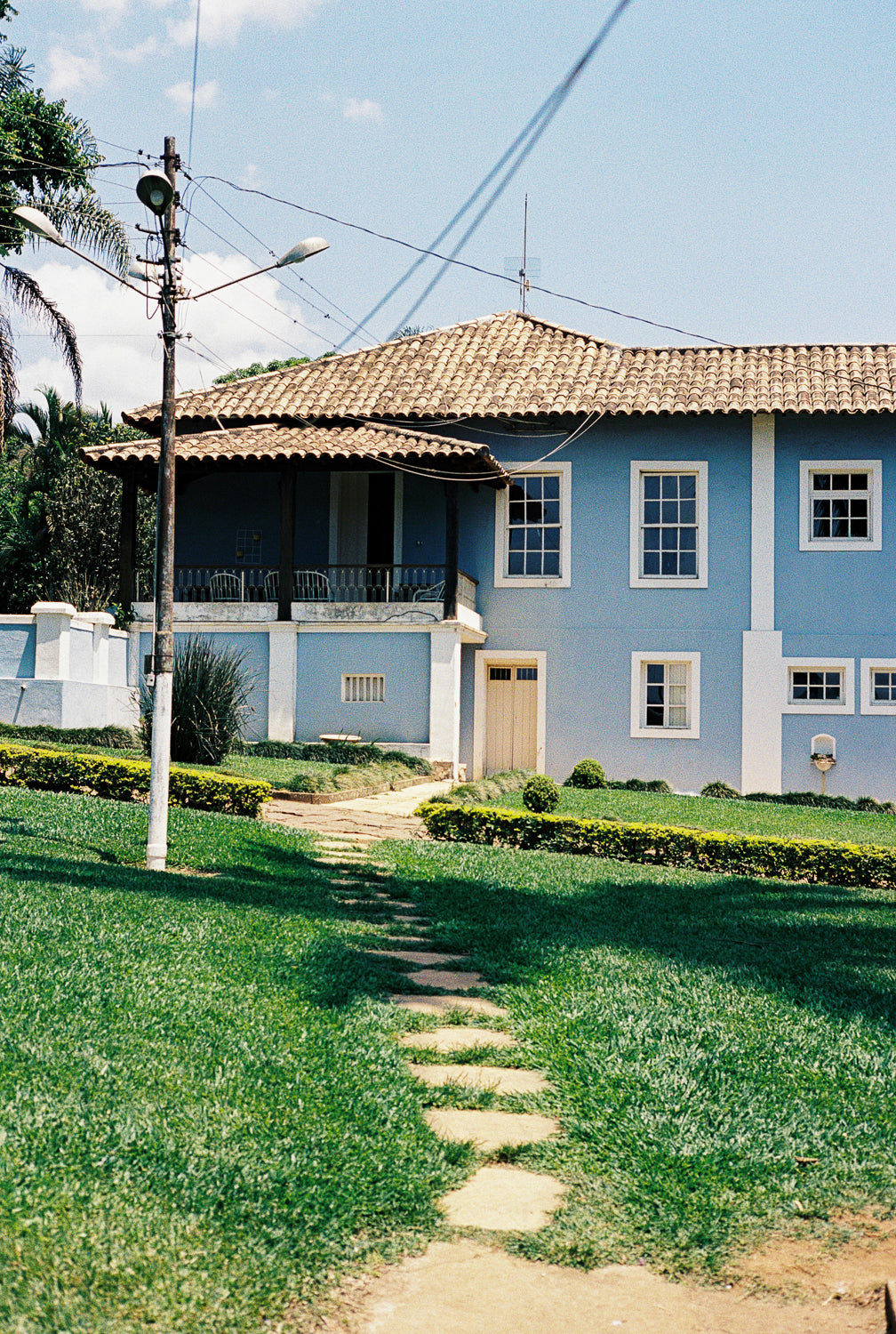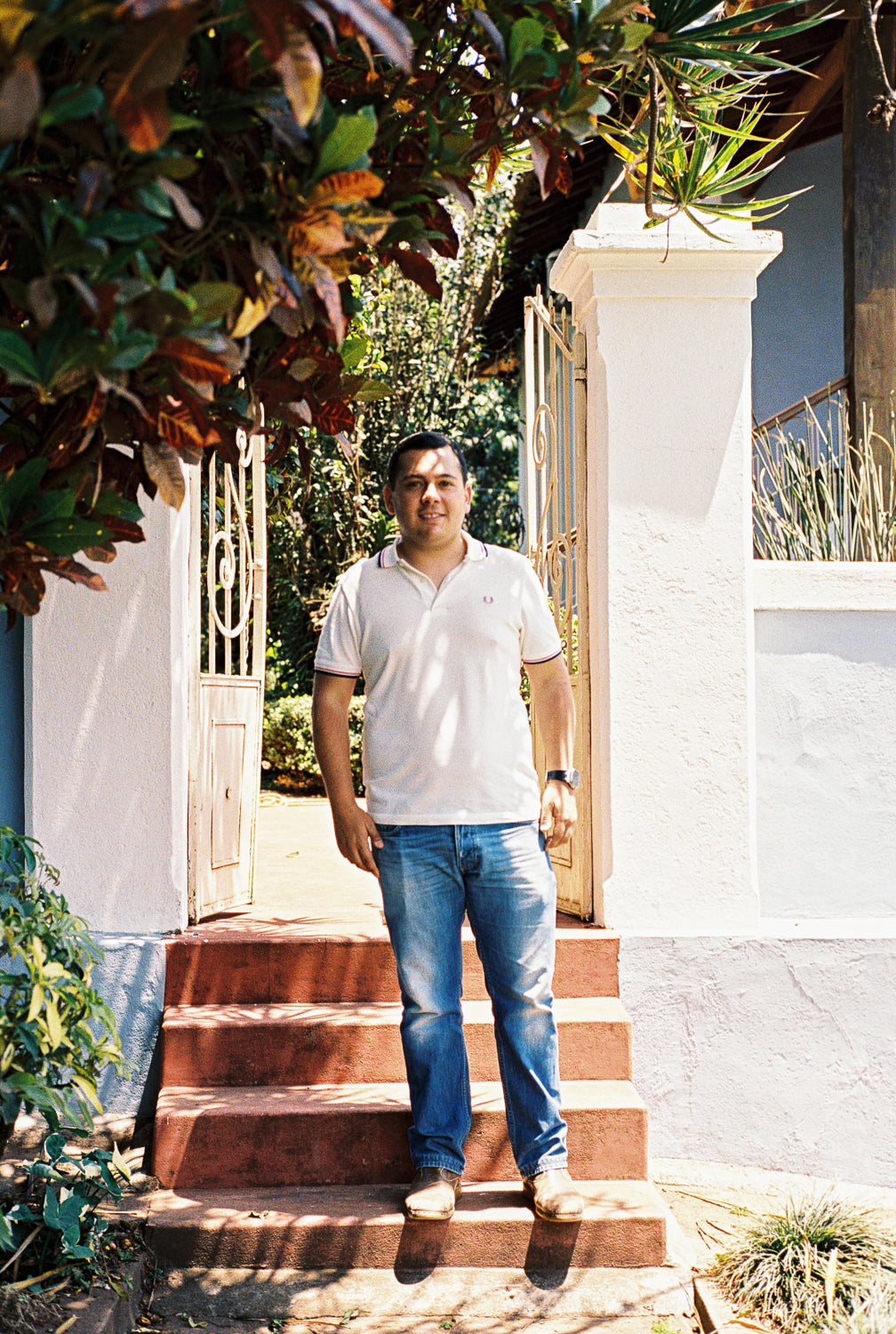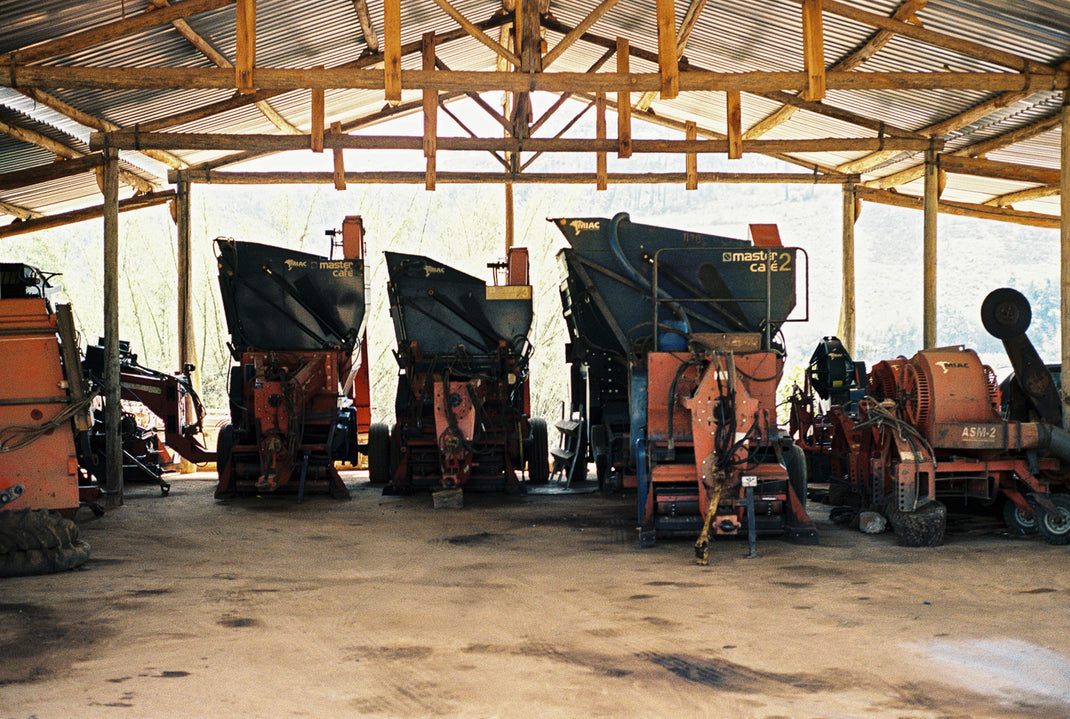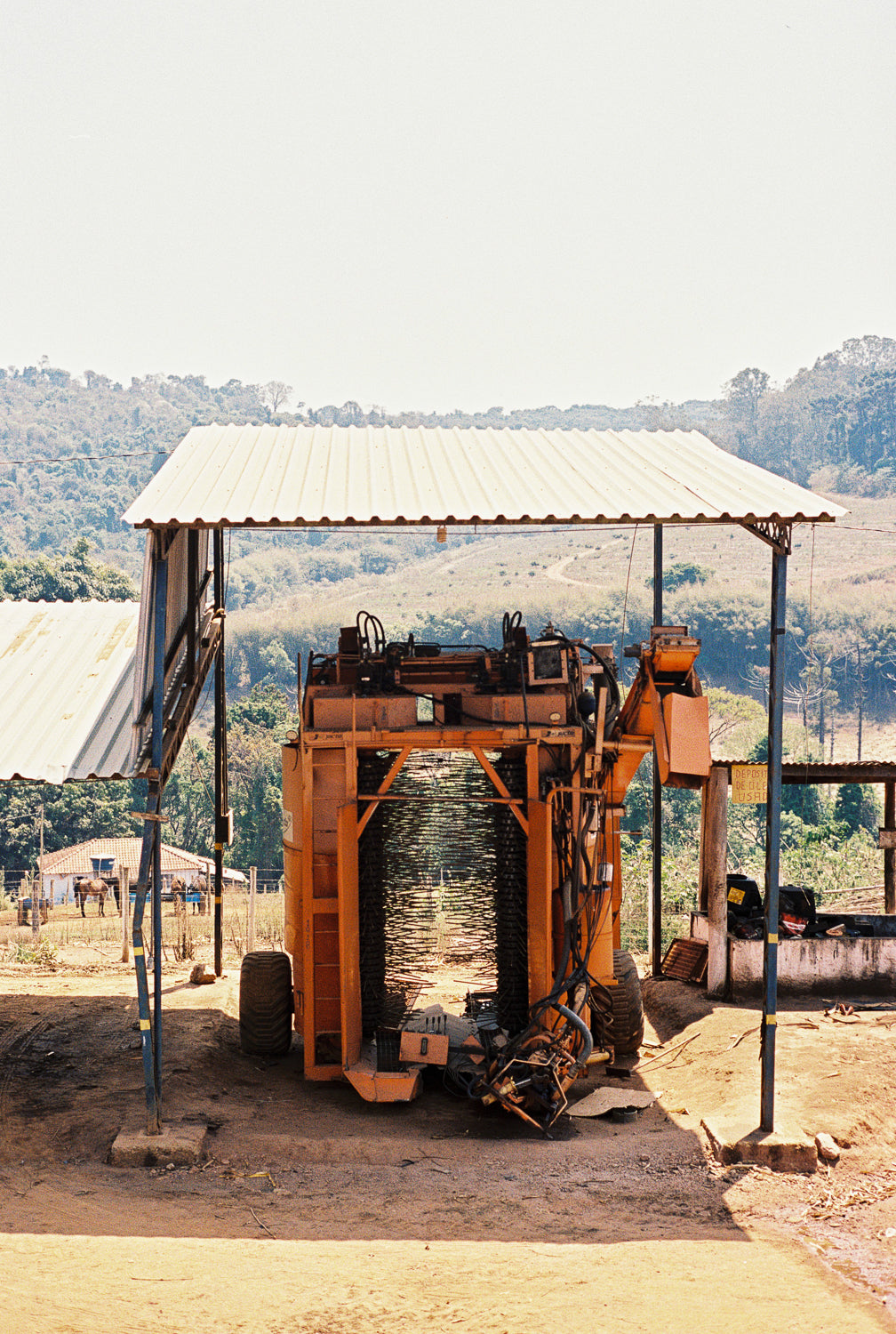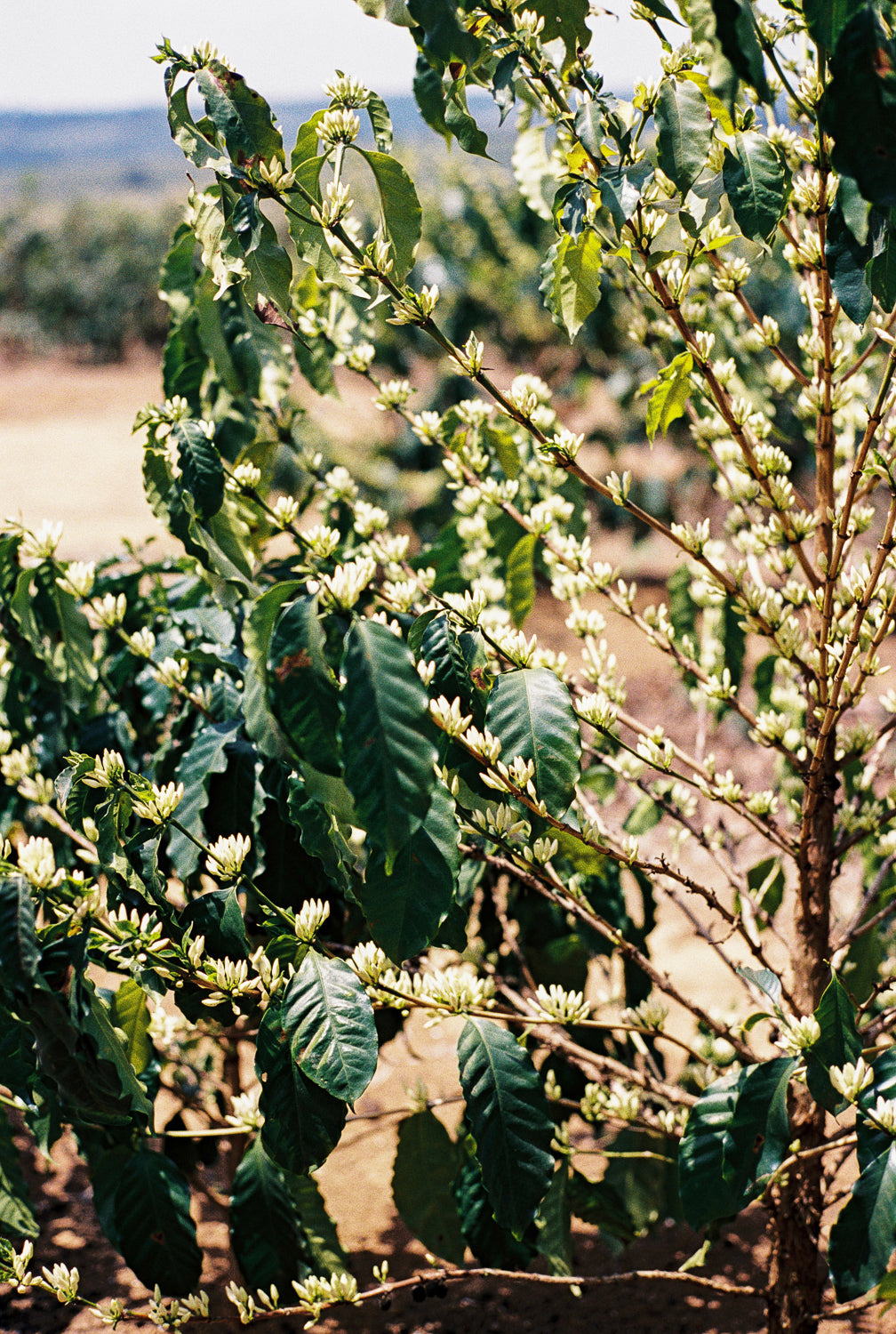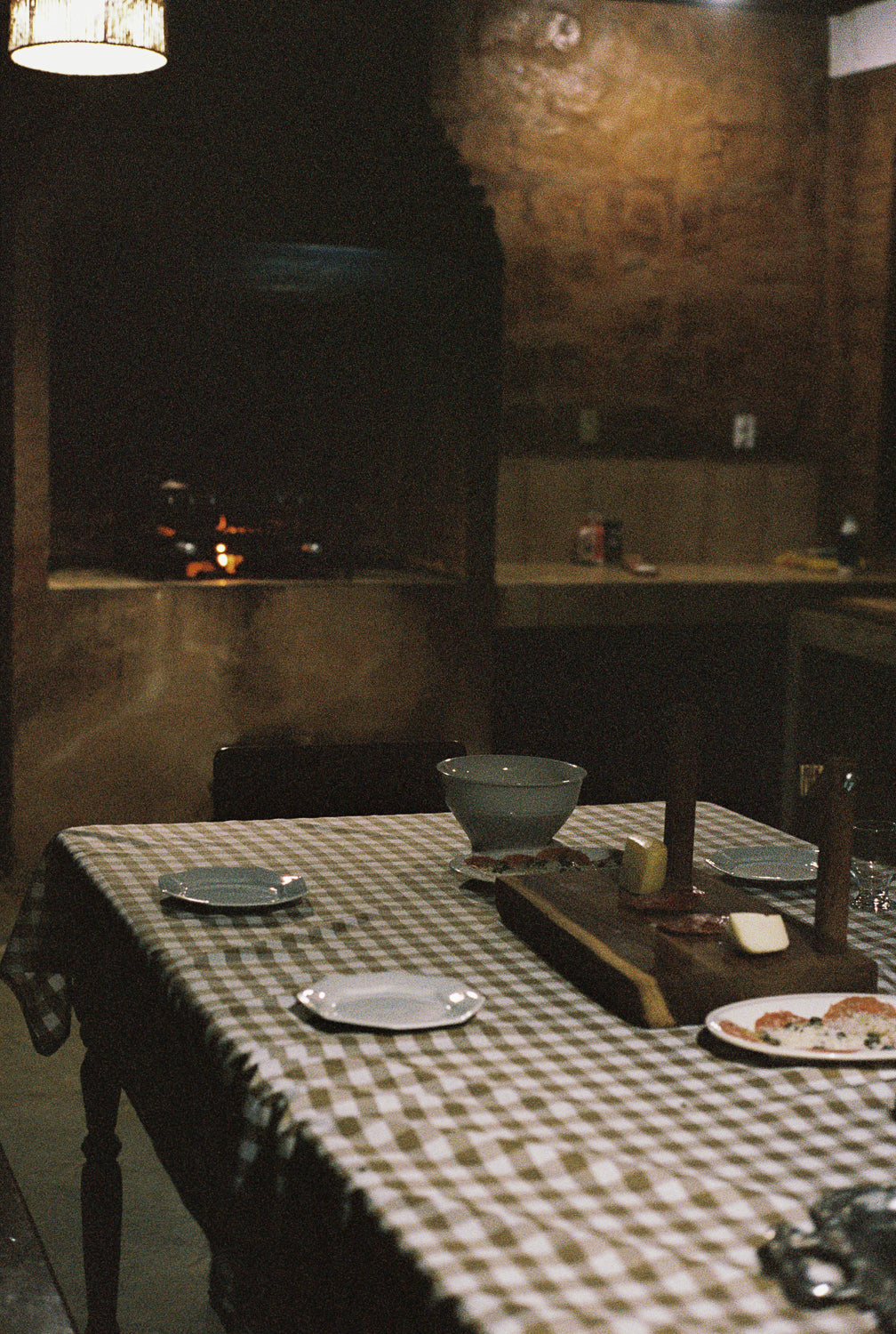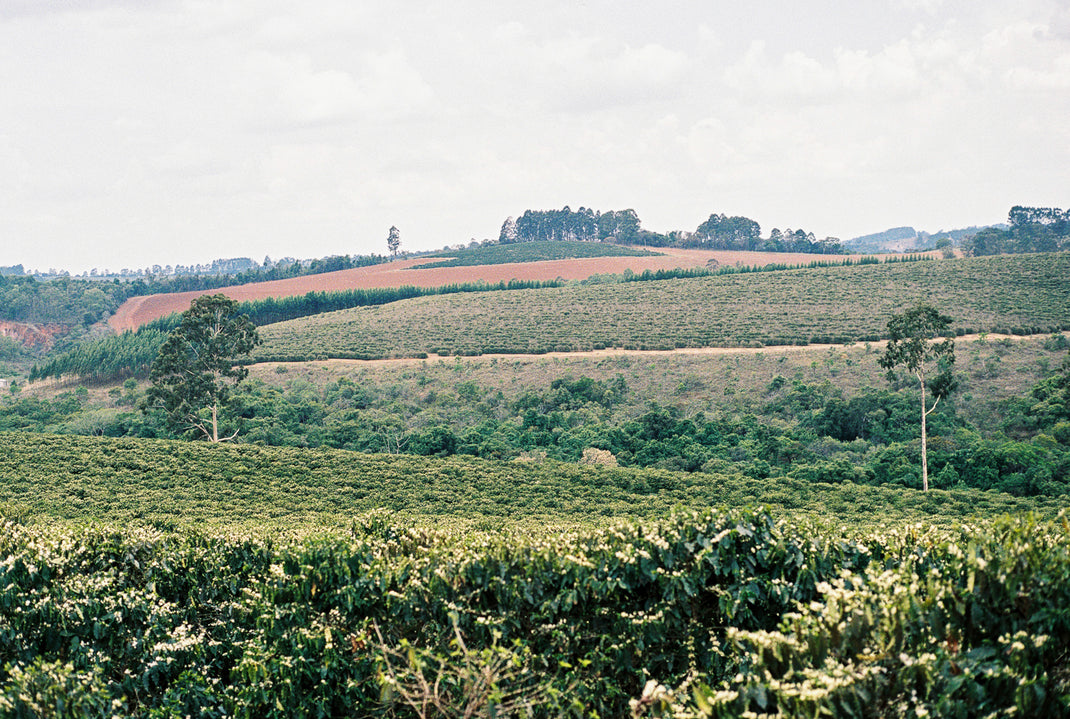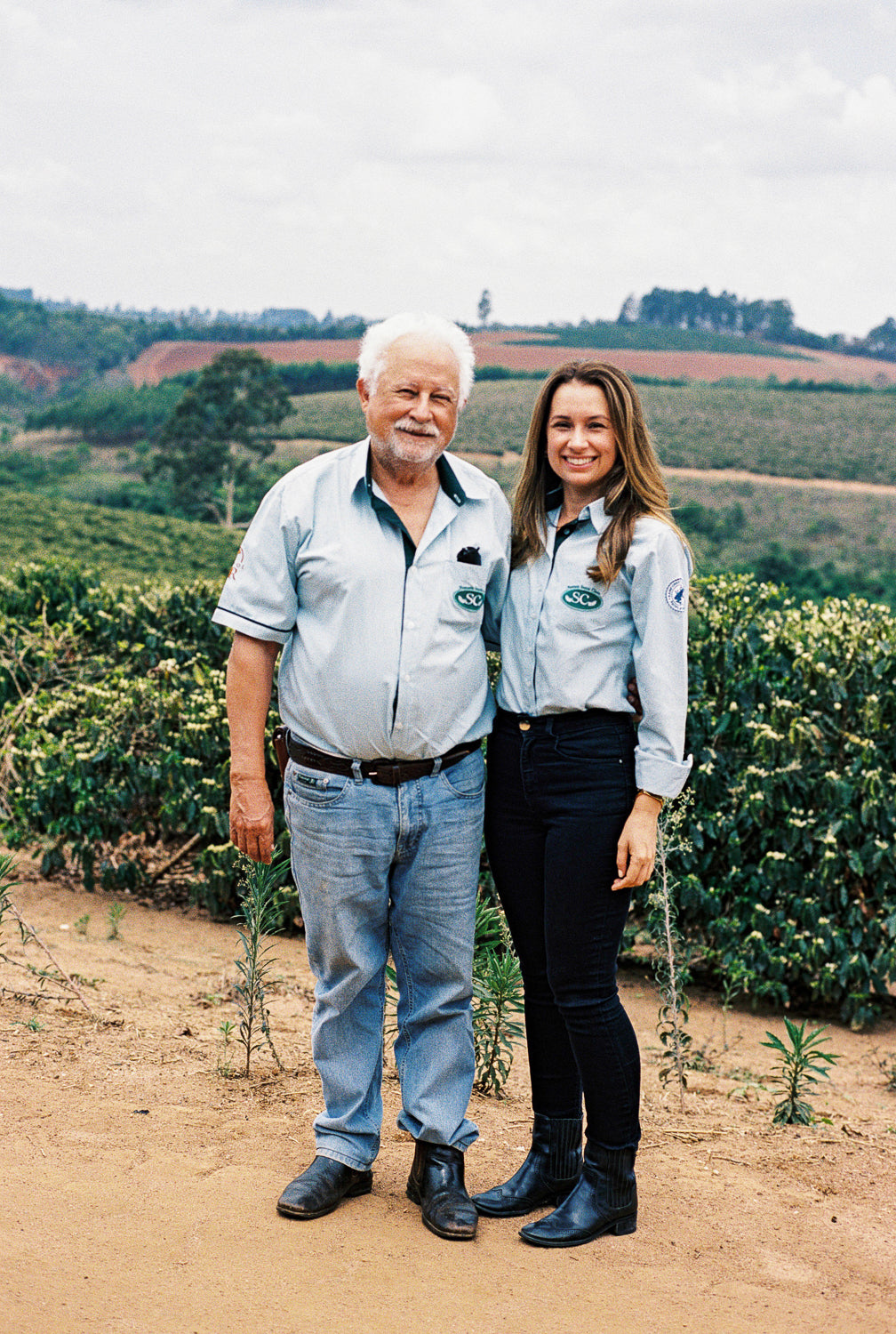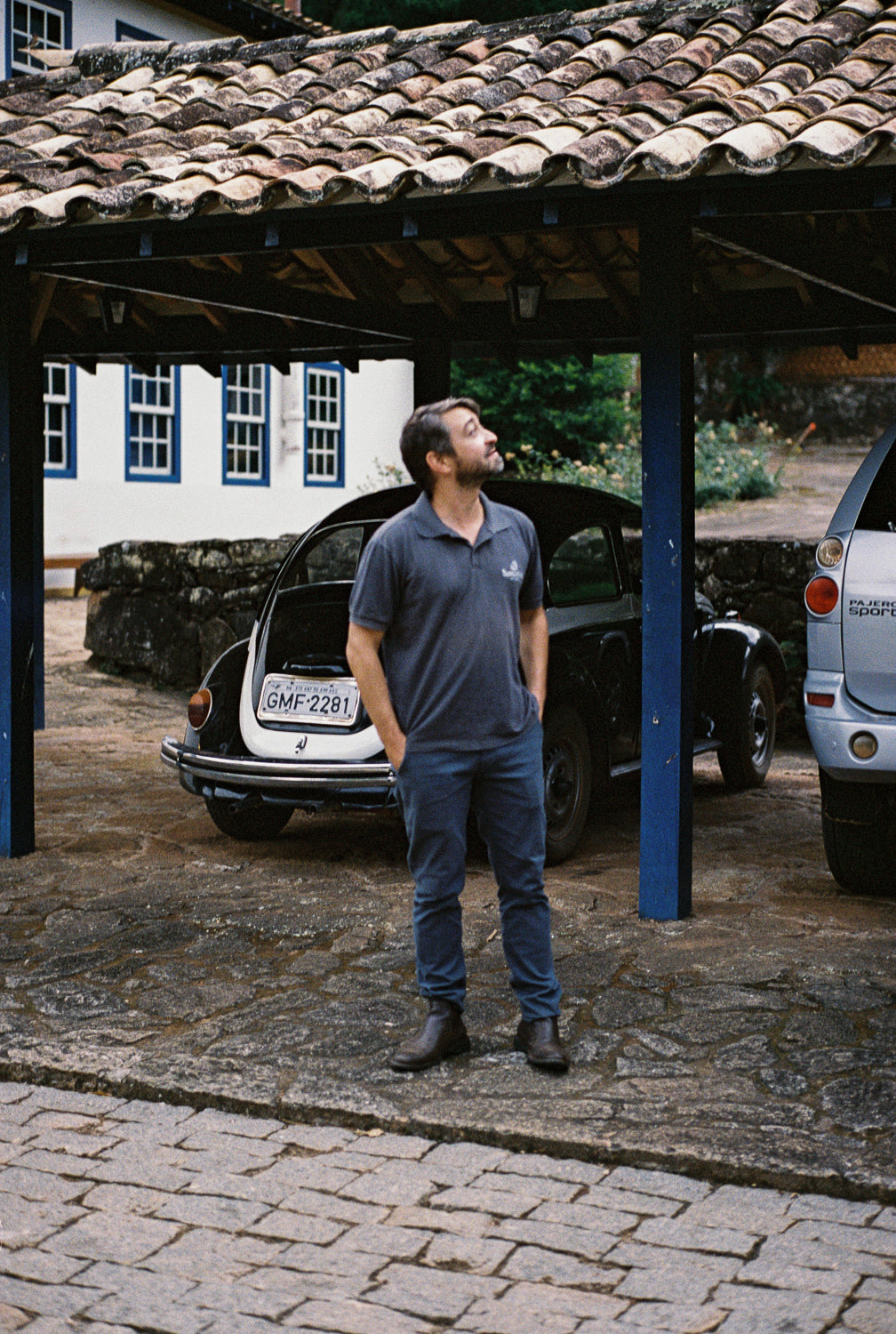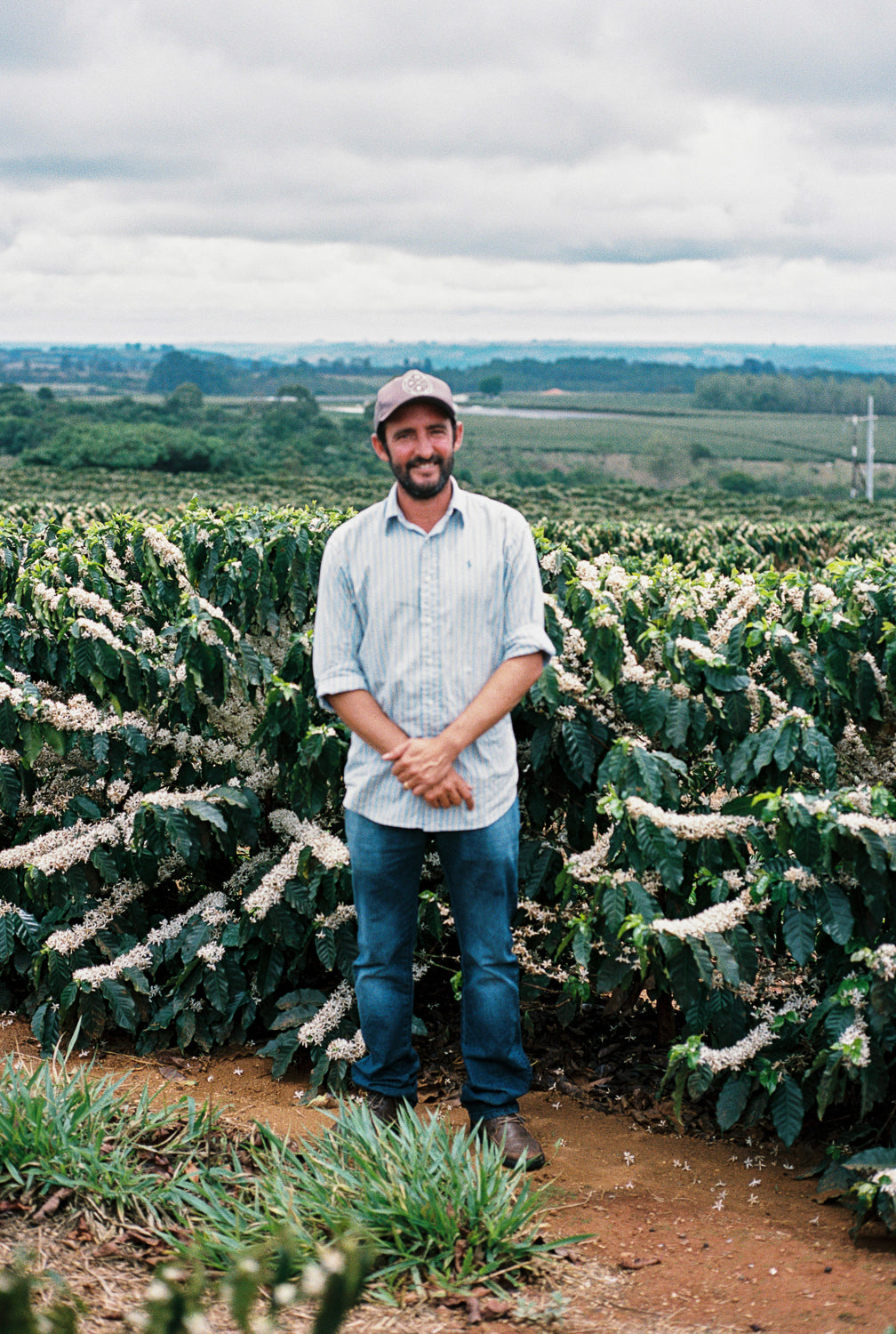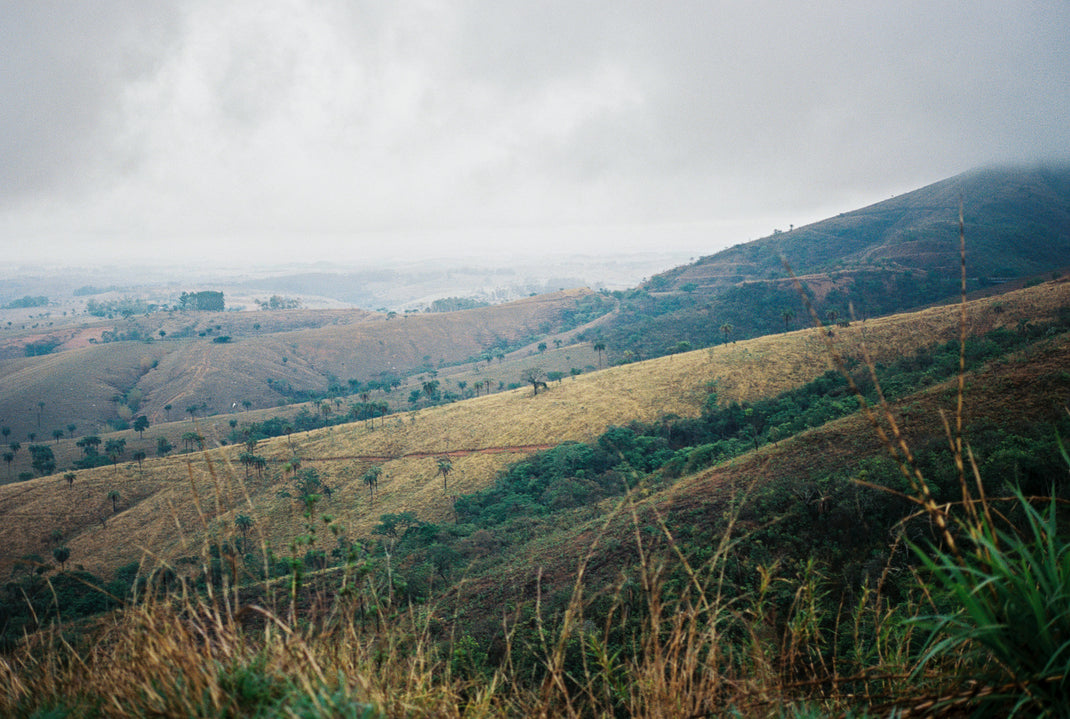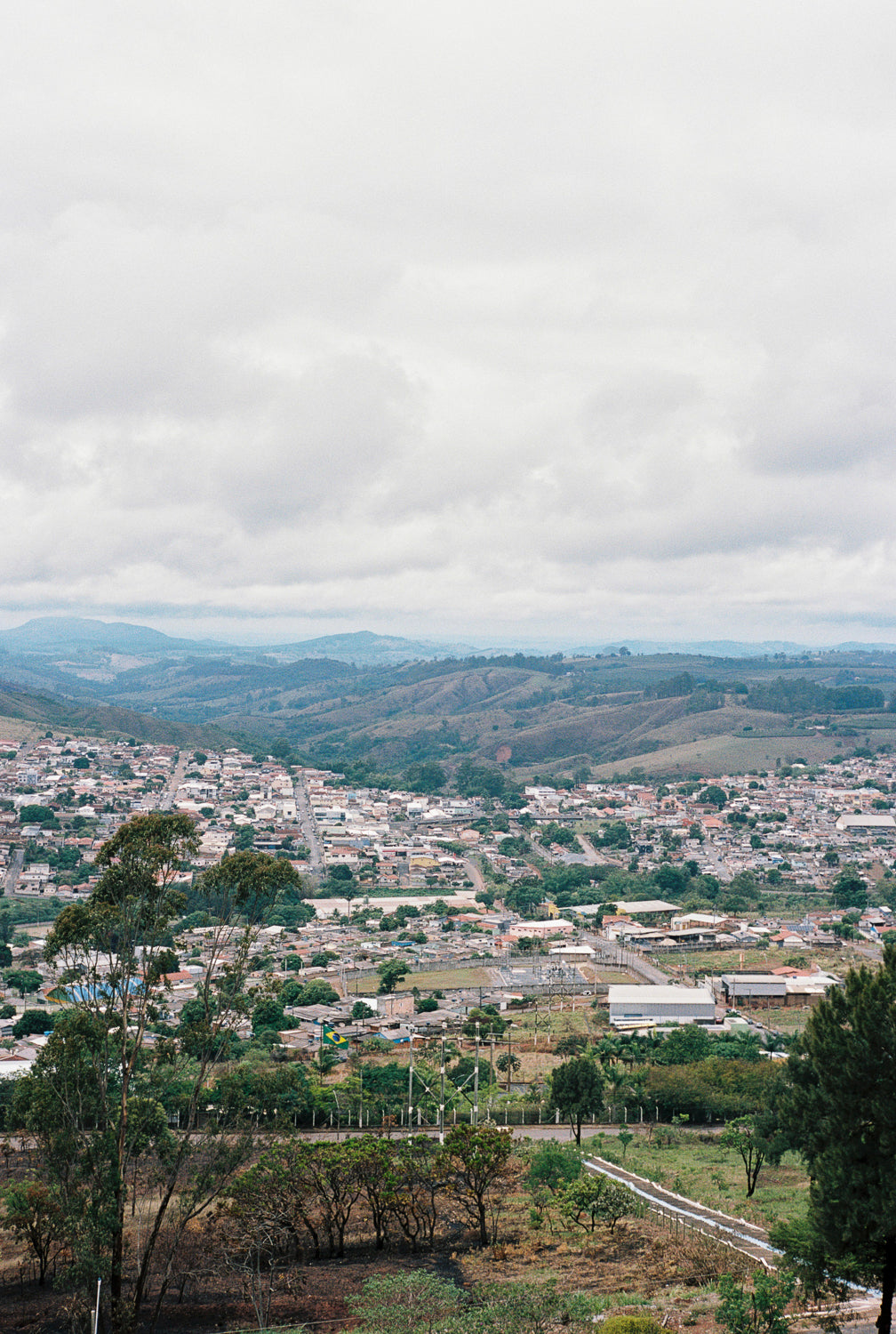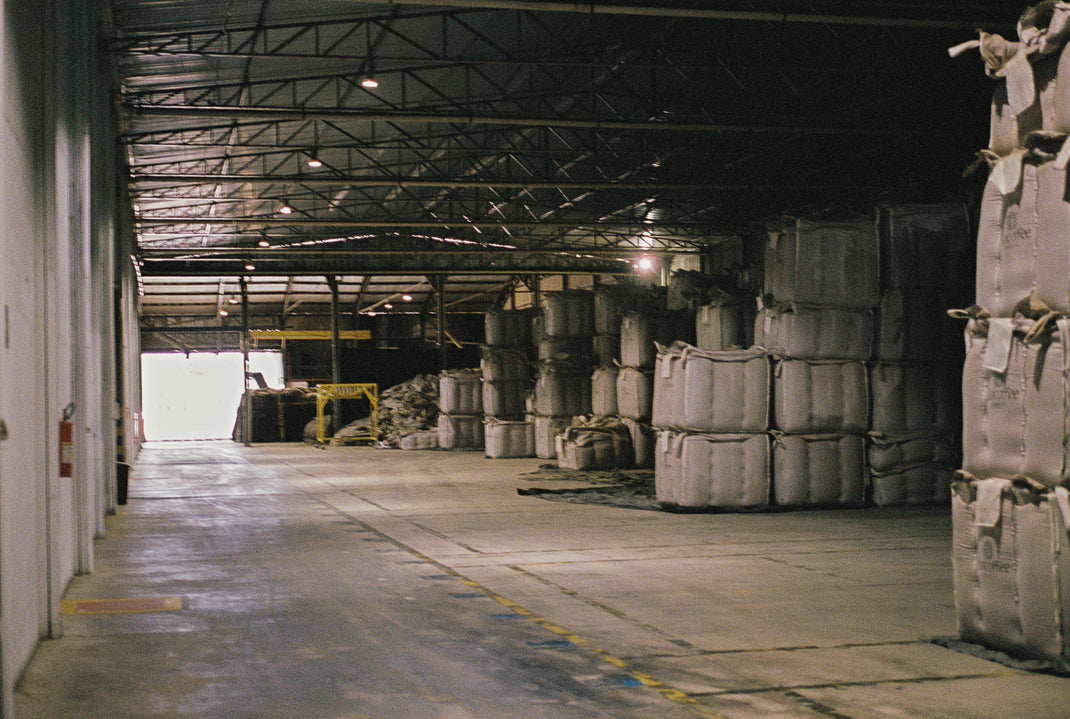Brazil doesn’t always get the credit it deserves in the specialty coffee scene. Often seen as the land of chocolatey, nutty, «easy» flavour profiles, it’s sometimes overlooked in favour of juicier, fruitier, funkier origins. Add to that the country’s reputation for massive monoculture farms, and it’s easy to see why some people underestimate Brazilian coffee.
But we knew that wasn’t the whole story. We’ve been working with producers like Otavio, Heron, and Paulo Afonso for years, and we knew we’d be visiting farms where sustainability, innovation, and high attention to detail are just as present as in any other origin. Still, when we travelled to Brazil for the first time, we didn’t really know what to expect from the country itself.
What we found over the course of five weeks really blew us away. The people, the landscapes, the food, the warmth – it all came together in a way that made this one of our most memorable coffee trips so far. A huge part of that was thanks to the incredible team at Sancoffee, the cooperative behind Santa Clara, who supported and guided us throughout the journey, as well as the farmers who welcomed us to their farms.
This blog post is a look back at the farms we visited, the people we met, and everything we learned along the way – both about coffee and about Brazil.
Varginha and Fazenda Do Salto
After a week in São Paulo filled with great food, lively city energy, and a surprise 48-hour blackout, we set off for Varginha, Brazil’s coffee trading hub. Allan from Sancoffee welcomed us warmly, and after a night of sharing pizza and stories, we were off to visit Fazenda Do Salto – one of the most impressive coffee farms we’ve ever seen.
Managed by Otavio, the farm covers 1,700 hectares, with around 900 hectares dedicated to coffee and 400 hectares reserved for protected forest with native tree species. The farm’s highest plots sit at 1,200 masl, where cooler temperatures make shading trees unnecessary. Alongside coffee, they also grow soybeans, hops, and avocados, and care for a remarkable 150 horses, most of which Otavio knows by name or lineage.
We were really impressed by the the role that innovation and technology plays on Fazenda Do Salto. The farm uses boilers to power rotative dryers, significantly reducing wood consumption while maintaining consistent coffee quality. Each harvest begins with fermentation trials. Samples are carefully analysed in a lab to refine processes and improve quality.
Otavio’s excitement was contagious as he showed us around the fields, machine park, and garden. The excitement was shared between him and his father, who also spent time with us on the cool porch of the colonial-style house. At the end of the day, Otavio hosted us for a traditional Brazilian barbecue, where we were joined by Gabriel from The Coffee Quest, our sourcing partner for this coffee.
We’ve been buying coffee from Fazenda do Salto for five years already. It’s called Otavio and can be found in our online shop.
Fazenda Santa Clara
Paulo Afonso’s connection to coffee runs deep. Growing up in Varginha, his family had ties to both coffee production and farm work. After pursuing a career in mechanical engineering and starting his own business in Belo Horizonte, Paulo eventually purchased land in the early 90s. Starting with just five hectares of coffee, he gradually expanded and built a thriving farm known for its natural coffees. Paulo, who joked that he came to the farm to retire, now cultivates around 200 hectares of coffee on Fazenda Santa Clara.
Today, their focus on precision agriculture and soil health allows them to adapt to changing conditions. Paulo’s engineering background shapes his approach to farm management – including a detailed agricultural schedule that tracks every lot’s progress.
Sustainability is a priority. Paulo proudly described their CO₂ evaluation, emphasising that they do it out of responsibility, not obligation. The farm also engages in reforestation and actively protects the soil from erosion. Fazenda Santa Clara is, in fact, CO₂ negative – meaning the farm absorbs more CO₂ than it emits.
Since 2012, Santa Clara has been part of Sancoffee, allowing them to export around 50% of their coffee – a high number driven by consistency and quality. With his experience in both business and coffee production, Paulo also acts as a mentor in Sancoffee’s impact program, supporting others in the coffee industry.
Exploring the farm with Sancoffee’s Allan – and joined by Paulo’s daughter Lilian who also works in the family business – we were delighted to spot our very own Drip Roasters Santa Clara coffee bags proudly displayed in their office. Before leaving, we enjoyed a coffee prepared by Rafael, the post-harvest manager, accompanied by the best Pão de Queijo of our Brazil trip. Paulo’s secret to a great cup of coffee? Good water – just as essential for making Cachaça, as he reminded us with a smile. We totally agree.
Santa Clara is the only coffee we offer year-round – and it’s been in our coffee selection for over five years now. It’s also available as a subscription for those who love it as much as we do.
Fazenda Canta Galo
Our visit to Fazenda Canta Galo took us to Campos Altos, where we spent two nights on the farm with Heron and his family. They welcomed us warmly with a delicious lunch of Brazilian specialities, and the two young girls even surprised us with drawings of coffee trees.
Heron showed us around the farm, where we visited young Geisha plots, explored the large drying patios and processing facilities, and saw how close recent fires had come to their land. Later, during a relaxed barbecue, we learned more about Heron’s journey – once a PE teacher, he returned to manage the family farm after his father’s passing.
Driving through the small town of Campos Altos, we visited Heron’s different coffee lots. At one more remote plot, we watched him take one photo after another of his flowering coffee trees. Despite all his years on the farm, it was clear that coffee is still exciting to him.
We also visited Comercial Coffee, where we met the team that supports Heron with roasting, sample prep and quality assessment. After cupping several lots, we picked some samples to bring home – a decision we were grateful for later on our trip.
We’ve been buying coffee from Canta Galo for the third year in a row now and always look forward to its arrival.
Sancoffee
Founded in 2000, Sancoffee supports a community of farmers in Minas Gerais with access to international markets, infrastructure, and innovation. We have been doing business with them for over five years, they have visited us at our roastery and café and we usually meet up with them once a year at the World of Coffee trade show. It was a privilege to finally explore the region with Allan of Sancoffee. He took so much time to show us around, share insights into Brazilian coffee and culture, and made us feel incredibly welcome – even though they work with customers much bigger than us.
At Sancoffee’s headquarters, we joined a cupping and toured their impressive warehouse equipped with advanced sorting systems, climate control and RFID-tracked storage. With Allan, we also visited a 12-hectare regeneration plot just as flowering had begun – a moment of great excitement for every farmer we’ve met. We explored a nearby reforested area, attended a local coffee competition, and wrapped up the day with dinner and great conversations with Allan and CEO Fabricio in Lavras.
Até Mais!
What struck us most about the farms we visited in Brazil was how different they felt from the smaller, more diversified operations we’ve seen in other countries like Costa Rica, Mexico or Panama. The scale alone was impressive – not just in terms of hectares, but also infrastructure, equipment, and logistics. Mechanical harvesting is common here, a stark contrast to the hand-picking we’ve observed elsewhere. On smaller farms that work sustainably elsewhere, we often see agroforestry projects or coffee planted alongside other crops and native trees. On these bigger operations in Brazil, we saw entire fields planted exclusively with coffee – though surrounded by large tracts of protected native forest.
Given the size and efficiency of these farms, one might assume the work would feel more industrial, less personal. But the opposite was true. What stood out was the genuine passion the producers showed – their deep curiosity, their pride, and their constant attention to detail. Many had academic backgrounds in agronomy or engineering and approached coffee production with a level of expertise that was truly outstanding. It reminded us that great coffee can be both personal and precise, emotional and technical at the same time.
We were also moved by the hospitality and generosity we experienced. We were hosted in people’s homes and apartments, treated to delicious meals and shared barbecues, and taken care of in a way that made us feel truly welcome.
